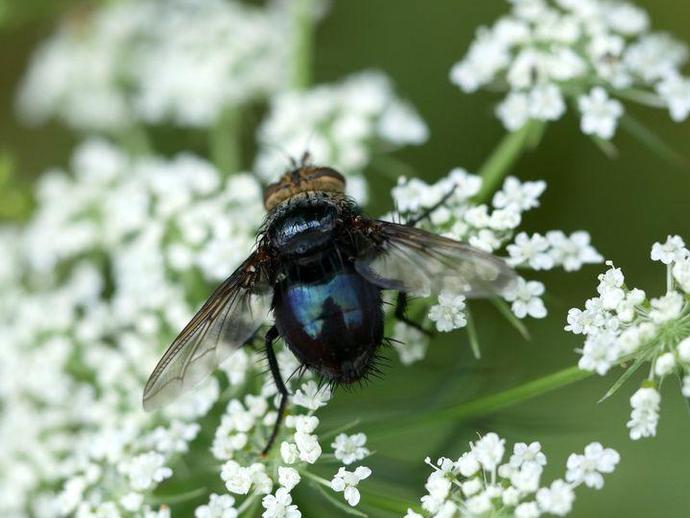November 1, 2021
We're reaching into the archives for today's #BenInNature update presented by our friends at Carter Bank & Trust! The following post was originally published on August 22, 2020.
When we think of flies, we usually think of them as being drawn to garbage and other gross stuff. However, there is an enormous amount of variety among flies, and they have evolved all kinds of unique ways to survive and reproduce.
This particular fly belongs to the genus Archytas, named after the classical Greek philosopher and mathematician of the same name. Flies within this genus belong to the tribe Tachinini, which falls within the Tachinidae family of flies. There are more than 1,300 species within this family just in North America, and more than 8,200 known species worldwide!
Tachinid flies don't lay their eggs in garbage or dead critters like house flies do. Instead, they lay their eggs on other insects. In most species, the eggs are large enough that you can easily see them with the naked eye. Believe it or not, they're usually stuck so firmly to the host insect that removing the egg would kill the host!
Once the egg hatches, you can probably imagine what happens next. The fly larva burrows into the host insect and eats the host from the inside out until it emerges as an adult. While that may seem gross, these flies are responsible for keeping a wide variety of pest insects in check. They're also usually generalists, meaning that most Tachinid flies don't target a single species of insect; they're pretty open-minded that way.
Thank you to VMNH Executive Director Dr. Joe Keiper for the ID!
ABOUT #BenInNature
Social distancing can be difficult, but it presents a great opportunity to become reacquainted with nature. In this series of posts, Administrator of Science Ben Williams ventures outdoors to record a snapshot of the unique sights that can be found in the natural world. New updates are posted Monday - Friday, with previous posts highlighted on the weekends. This series of posts is made possible thanks to the support of VMNH Corporate Partner Carter Bank & Trust (www.cbtcares.com).
NATURE PHOTO IDENTIFICATIONS
If you discover something in nature that you would like help identifying, be sure to message us right here on Facebook with a picture (please include location and date of picture) and we'll have our experts help you identify it!

 Hours & Admissions
Hours & Admissions Directions
Directions

